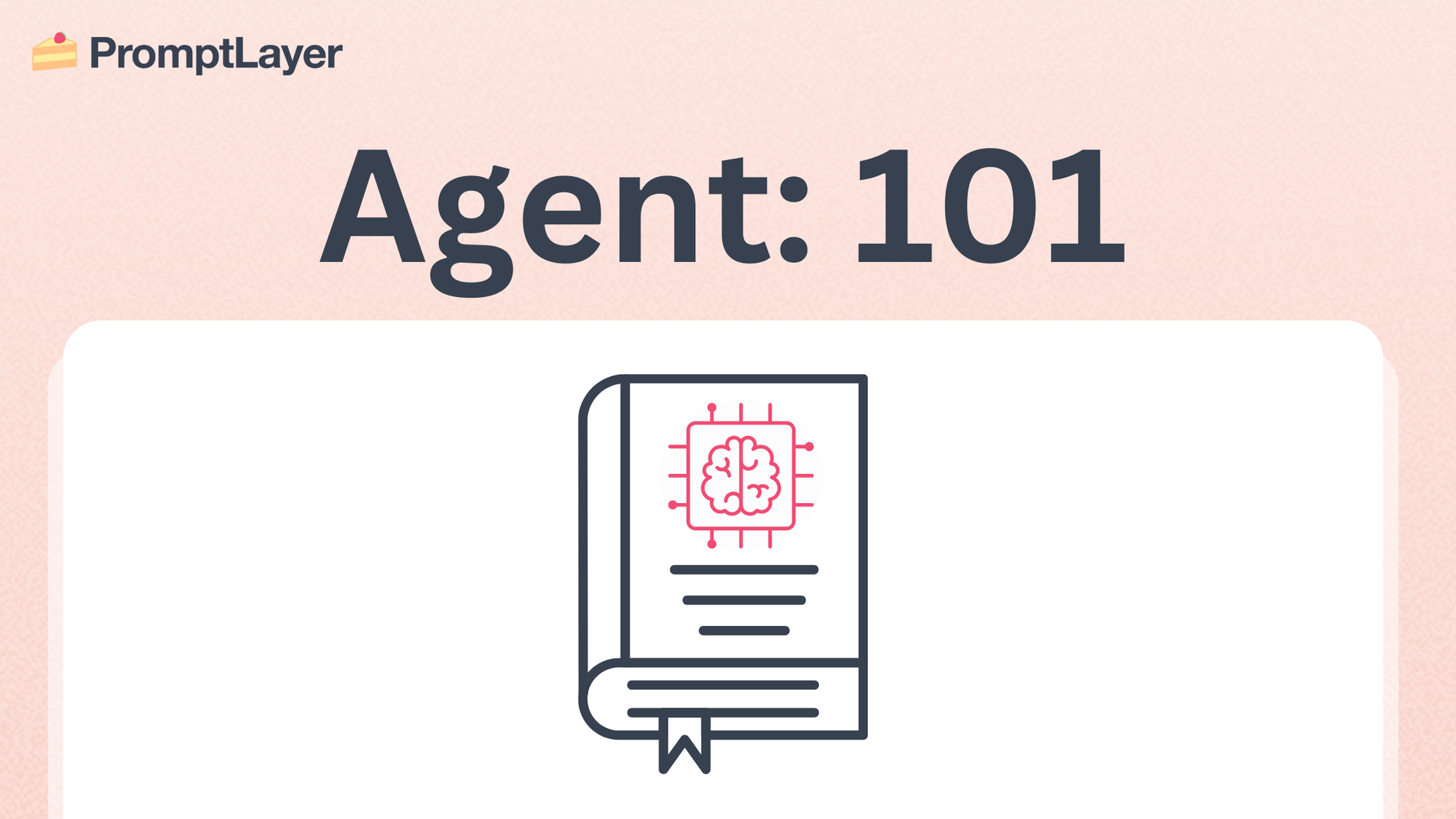How to Build AI Agents: A Guide

AI agents are reshaping technology by automating tasks and offering intelligent solutions across industries like healthcare, finance, manufacturing, and more. These systems are becoming integral to modern workflows due to their ability to analyze data, make decisions, and enhance efficiency. This article outlines key concepts, practical steps for building AI agents, and introduces PromptLayer Workflows as an accessible tool to simplify development.
What Are AI Agents?
An AI agent is a software program designed to interact with its environment and achieve specific goals. Operating autonomously, these agents react to their surroundings and make decisions based on advanced algorithms and machine learning. They range from simple reflex agents to sophisticated learning systems capable of adapting to dynamic scenarios and addressing complex challenges.
Key Characteristics of AI Agents:
- Autonomous Operation: Function independently without constant human input.
- Environmental Responsiveness: Perceive and respond to changes in their surroundings.
- Initiative-Taking: Proactively pursue goals and optimize outcomes.
- Communication: Interact effectively with other systems, agents, or humans.
These capabilities enable AI agents to tackle tasks that were once time-consuming or error-prone for humans, driving their adoption across various sectors.
Types of AI Agents
AI agents can be categorized based on their complexity and decision-making methods:
- Simple Reflex Agents: React directly to current stimuli without reference to historical data; ideal for predictable environments.
- Model-Based Agents: Maintain internal models to consider both past and present information for decision-making.
- Goal-Based Agents: Employ planning and search algorithms to achieve specific objectives.
- Utility-Based Agents: Optimize actions to maximize satisfaction or outcomes.
- Learning Agents: Continuously improve through experience, leveraging machine learning to adapt and enhance performance.
Building AI Agents from Scratch
Developing an AI agent involves the following structured steps:
- Define Goals and Environment: Clearly outline the agent's purpose, tasks, and operational context. Determine whether the environment is deterministic or stochastic, fully observable or partially observable.
- Assemble a Team: A multidisciplinary team with expertise in machine learning, data science, and software engineering is essential.
- Prepare High-Quality Data: Collect, clean, and preprocess relevant data to ensure accuracy and usability.
- Choose Tools and Technologies: Select appropriate frameworks (e.g., TensorFlow, PyTorch) and libraries (e.g., spaCy, Hugging Face) for NLP tasks. Ensure compatibility with deployment options like cloud, on-premises, or edge computing.
- Design the Architecture: Define how the agent processes information, represents knowledge, and interacts with its environment through sensors and actuators.
- Develop the Agent: Implement the agent’s behavior and integrate its components effectively.
- Deploy and Monitor: Launch the agent in real-world scenarios, monitor performance, and iterate to address challenges and improve functionality.
Simplifying Development with PromptLayer Workflows
PromptLayer Workflows offer a visual, intuitive approach to building AI agents. Developers can organize processes into nodes and connect them to create workflows, reducing the need for extensive coding.
Steps to Build a Workflow in PromptLayer:
- Navigate to the Registry page and select the Workflows tab.
- Click Create New Workflow, assign a name, and confirm.
- Use the visual canvas to add nodes by right-clicking and selecting Add Node.
- Connect nodes by dragging from the output port of one node to the input port of another.
- Run the workflow by clicking the Run button to test functionality.
Example Workflow Applications:
- Multi-LLM Aggregator: Combine outputs from multiple language models for richer insights.
- Recommendation Engine: Generate personalized recommendations based on user preferences.
- Data Processing Pipelines: Automate the cleaning, transformation, and analysis of datasets.
Benefits of PromptLayer Workflows
PromptLayer Workflows streamline AI development and provide several key advantages:
- Experiment Efficiently: Test and iterate on configurations with ease.
- Reduce Development Time: Accelerate the building and debugging process with a visual interface.
- Collaborate Seamlessly: Enable teams to work together on workflows using a shared interface and unified design approach.
Final thoughts
Building AI agents involves mastering fundamental principles, choosing suitable tools, and following a structured process to design and implement effective systems.
PromptLayer Workflows serve as a tool for simplifying Agent development, providing an intuitive visual interface. As AI continues to play an increasingly critical role across industries, tools and intelligent agents will unlock new possibilities for those who use them.
About PromptLayer
PromptLayer is a prompt management system that helps you iterate on prompts faster — further speeding up the development cycle! Use their prompt CMS to update a prompt, run evaluations, and deploy it to production in minutes. Check them out here. 🍰



